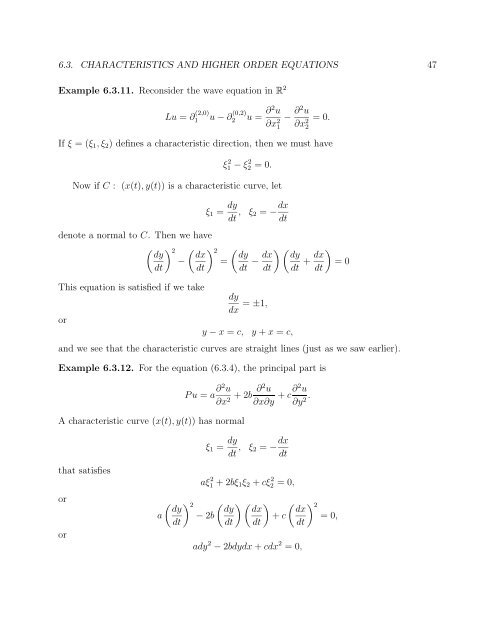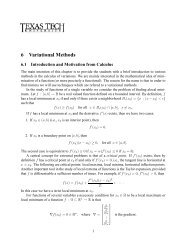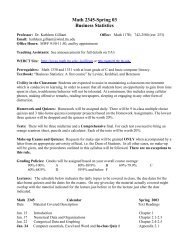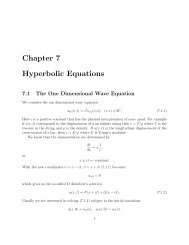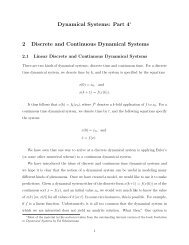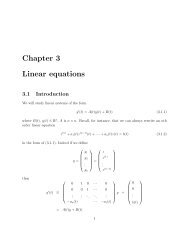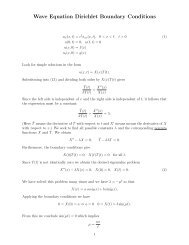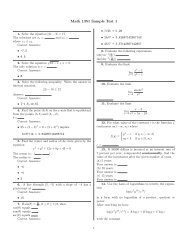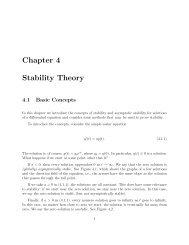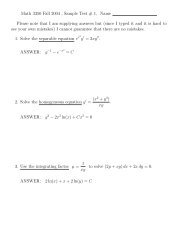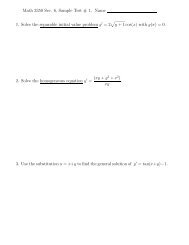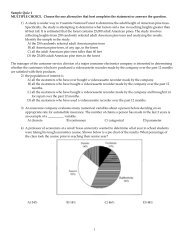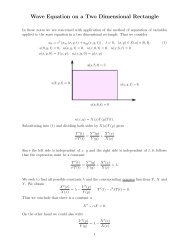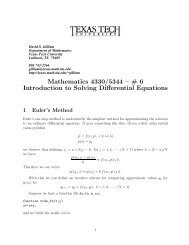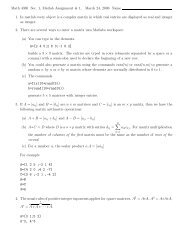Chapter 6 Partial Differential Equations
Chapter 6 Partial Differential Equations
Chapter 6 Partial Differential Equations
You also want an ePaper? Increase the reach of your titles
YUMPU automatically turns print PDFs into web optimized ePapers that Google loves.
6.3. CHARACTERISTICS AND HIGHER ORDER EQUATIONS 47<br />
Example 6.3.11. Reconsider the wave equation in R 2<br />
Lu = ∂ (2,0)<br />
1 u − ∂ (0,2)<br />
2 u = ∂2 u<br />
− ∂2 u<br />
=0.<br />
∂x 2 1 ∂x 2 2<br />
If ξ =(ξ 1 ,ξ 2 ) defines a characteristic direction, then we must have<br />
ξ 2 1 − ξ 2 2 =0.<br />
Now if C : (x(t),y(t)) is a characteristic curve, let<br />
ξ 1 = dy<br />
dt ,<br />
ξ 2 = − dx<br />
dt<br />
denote a normal to C. Then we have<br />
( ) 2 ( ) 2 ( dy dx dy<br />
− =<br />
dt dt dt − dx )( dy<br />
dt dt + dx )<br />
=0<br />
dt<br />
This equation is satisfied if we take<br />
or<br />
dy<br />
dx = ±1,<br />
y − x = c, y + x = c,<br />
and we see that the characteristic curves are straight lines (just as we saw earlier).<br />
Example 6.3.12. For the equation (6.3.4), the principal part is<br />
A characteristic curve (x(t),y(t)) has normal<br />
Pu = a ∂2 u<br />
∂x 2 +2b ∂2 u<br />
∂x∂y + c∂2 u<br />
∂y 2 .<br />
that satisfies<br />
or<br />
or<br />
a<br />
( ) 2 dy<br />
− 2b<br />
dt<br />
ξ 1 = dy<br />
dt ,<br />
ξ 2 = − dx<br />
dt<br />
aξ 2 1 +2bξ 1 ξ 2 + cξ 2 2 =0,<br />
( dy<br />
dt<br />
)( ) dx<br />
+ c<br />
dt<br />
ady 2 − 2bdydx + cdx 2 =0,<br />
( ) 2 dx<br />
=0,<br />
dt


